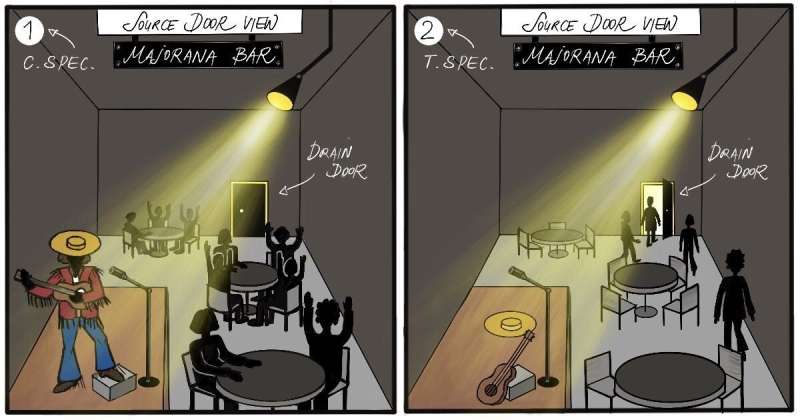
Look for the Majorana rock star. picture.Image credit: Maxim Borovkov
The most common particles are electrons and photons, which are considered examples of the large family of fermions and bosons, to which all other particles in nature belong. But there is another possible particle class, the so-called anyone. Anyons are expected to arise inside materials small enough to confine the wave function of an electron’s state, as they emerge from the collective dance of many interacting electrons.
One of these is named the Majorana zero module, an anyon cousin of the Majorana fermion proposed by Ettore Majorana in 1937. Majoranas, as these hypothetical anyons are affectionately called, are expected to exhibit a number of exotic properties, such as simultaneously behaving like particles and antiparticles, allowing mutual annihilation, and by encoding nonlocally in space The ability to hide quantum information. The latter property is particularly promising for elastic quantum computing.
Since 2010, many research groups have raced to find Majoranas. Unlike fundamental particles like electrons or photons that exist naturally in a vacuum, Majorana anyone would need to create in a hybrid material. One of the most promising platforms for realizing them is based on hybrid superconductor-semiconductor nanodevices. Over the past decade, these devices have been studied in extreme detail in hopes of conclusively proving the existence of Majoranas. However, Majoranas are tricky entities that are easily overlooked or confused with other quantum states.
published in nature, scientists have further elucidated the mysteries of Majorana physics. For the first time, two proven technologies are being used simultaneously on the same device. To their surprise, the researchers found that when they were looked for from the different angles provided by the second technique (tunneling spectroscopy), the state observed using one technique (Coulomb spectroscopy) was at first glance highly suggestive of Majoranas .
Observe a metaphorical scenario similar to the following. In search of the fabled Majorana rock star, you peek through the (source) door to a bar. A concert appears to be taking place. You can clearly see a phenomenal rock star on stage, wearing a Majorana costume and singing Majorana songs. The bar was full of Majorana fans who adored him. However, when you open a large (drainage) door at the far end of the bar, fans rush out – including so-called rock stars. As a true artist, the real Majorana would never have done such a thing.
“That’s what makes Majoranas so special. Just like true rock stars don’t simply leave the stage when they have an exit, Majoranas, by virtue of a deep mathematical principle called topological protection, anyone will are pinned to one side of the nanodevice, even when allowing conventional electrons to escape from the other side,” the researchers said.
“Our aim was to find out how to see if Majorana is present. In our experimental conditions, the gate is nothing more than a tunnel barrier for electrons to enter and exit. There is a drain gate and a source gate. From the two spectroscopic methods at the same time in Together, our Majorana rock star imposter turned out to be a different kind of quasiparticle. Don’t get us wrong, these are interesting superconducting quasiparticles, but not Majoranas,” the scientists continued.
The findings underscore the fact that convincing Majorana impostors are everywhere. They can exist in many different types of devices and can fool different measurement strategies respectively. The combination of two measurement strategies applied to the same device reveals the impostor through an apparent paradox, an approach that could greatly reduce interpretation ambiguity for future experiments. This is a much-needed step towards capturing the elusive Majorana and finally starting to harness its power.
More information:
Marco Valentini et al., Majorana-like Coulomb spectra without zero-biased peaks, nature (2022). DOI: 10.1038/s41586-022-05382-w
Provided by the Spanish National Research Council (CSIC)
quote: Imposter Physical Particles Revealed: A Key Advance in Quantum Technology (2022, 16 December) Accessed on 16 December 2022 from https://phys.org/news/2022-12-imposter-physical- particles-revealed-key.html Retrieve
This document is protected by copyright. Except for any fair dealing for private study or research purposes, no part may be reproduced without written permission. The content is for reference only.